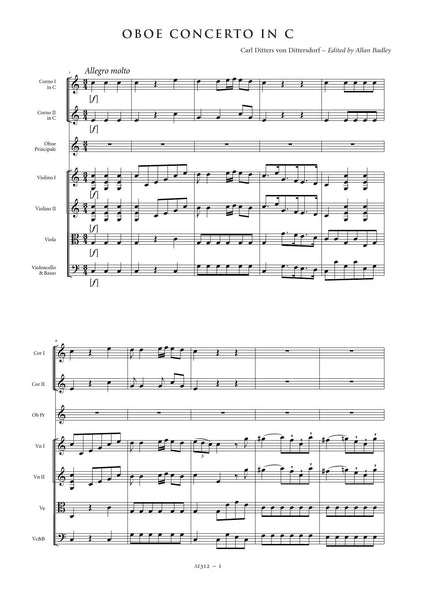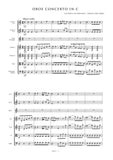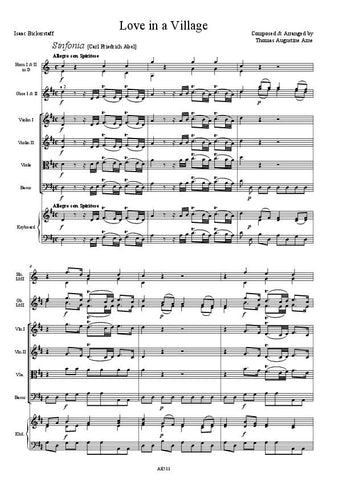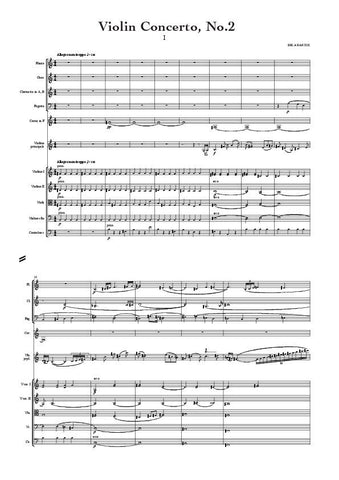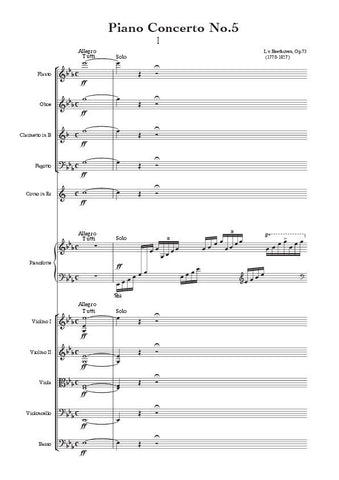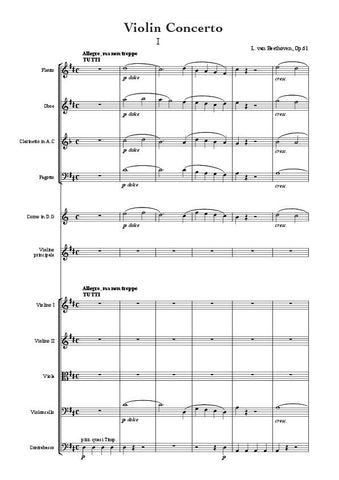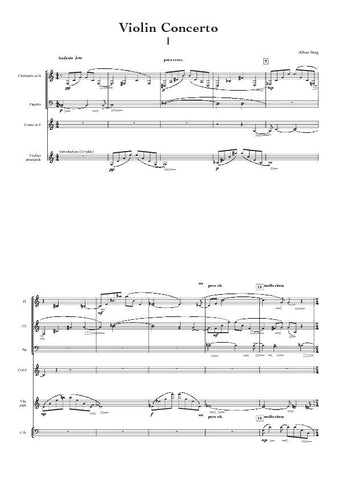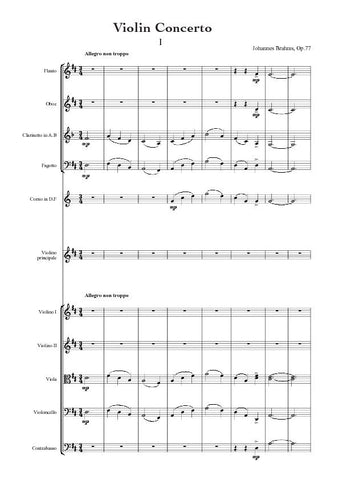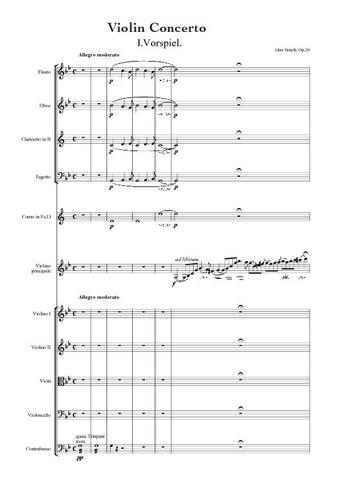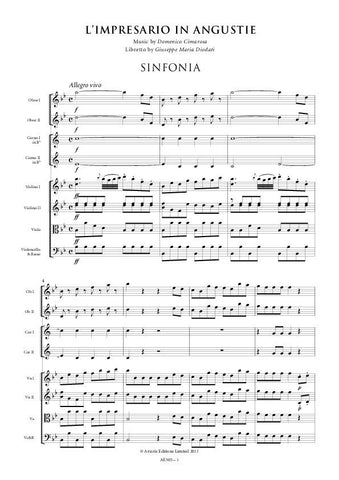Description |
Dittersdorf, Carl Ditters von (1739-1799)
|
||||||||||||||||||||
Details |
The Oboe Concerto in C exhibits many stylistic similarities with other concertos by Dittersdorf. The 3/4 Allegro molto opening movement is very unusual for the period although not without precedent. This might indicate a relatively late composition date - that is, post 1770 - although in every other respect the work resembles the earlier concertos. Significantly, the recapitulation begins with the solo instrument and not with the orchestra, a hallmark of the mid-century concerto. Dittersdorf's handling of the orchestra is assured and professional as one would expect from such a fine composer of symphonies. The solo writing too is thoroughly idiomatic and reveals a certain sensitivity to the instrument's expressive capabilities. For all that, however, the writing is less impressive and certainly less technically demanding than that found in the oboe concertos of Leopold Hofmann. This fact, of course, tells us far more about the unknown soloist than it does about the composer. The present edition is based on a set of manuscript performing parts preserved in the Thurn und Taxis'sche Hofbibliothek in Regensburg under the shelfmark Dittersdorf 32. The wrapper reads : Concerto. / Oboe Principale / Violino Primo / Violino Secondo / Corno Primo / Corno Secondo / Viola / Basso ô Violone / con / Basso ô Violoncello. / Del Sig: Carlo Titters . The solo part includes a written out cadenza for the second movement - which appears at the foot of the final page of the first movement - and a separate page at the end of the part which has the same cadenza together with cancelled cadenzas to what appears to be another C major concerto. In the absence of the autograph score or a set of authentic parts this edition attempts to convey as clearly as possible the composer's intentions as they are transmitted in the source. The style and notation of articulation and dynamic markings have been standardised throughout and, where missing from the source, markings have been reconstructed from parallel passages. These are indicated by the use of dotted slurs or brackets where appropriate. Like most eighteenth- century sources, the manuscript is at times inconsistent in its notation of appoggiature ; these too have been standardised to minimise confusion. Obvious wrong notes have been corrected without comment; editorial emendations with no authority from the source are placed within brackets. Allan Badley |
Loading...
Error




